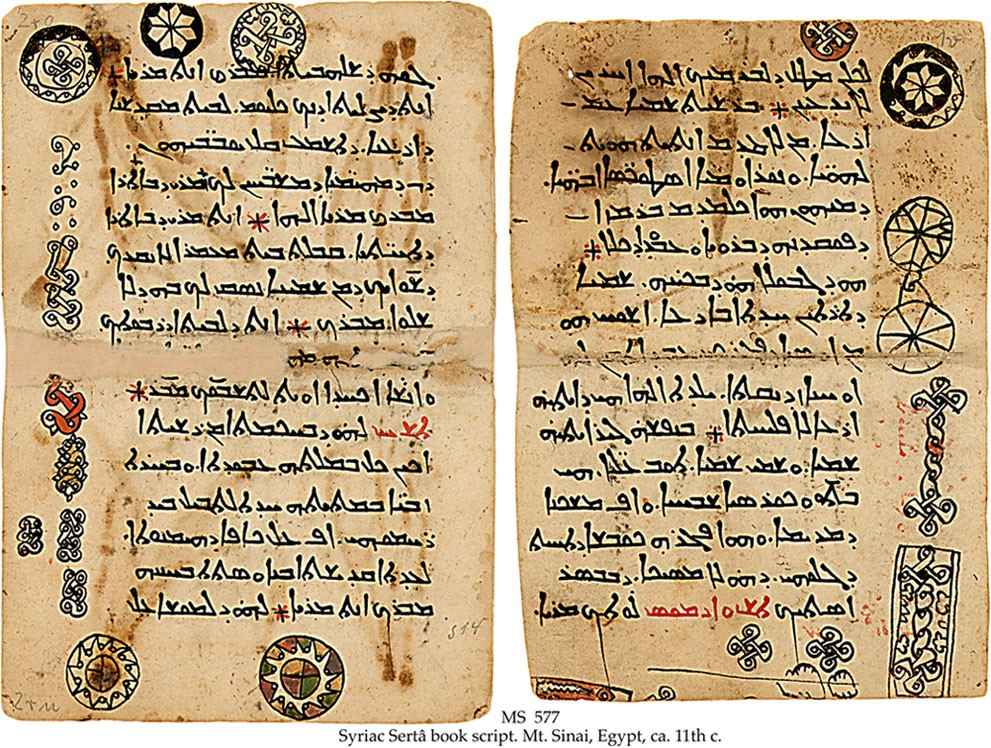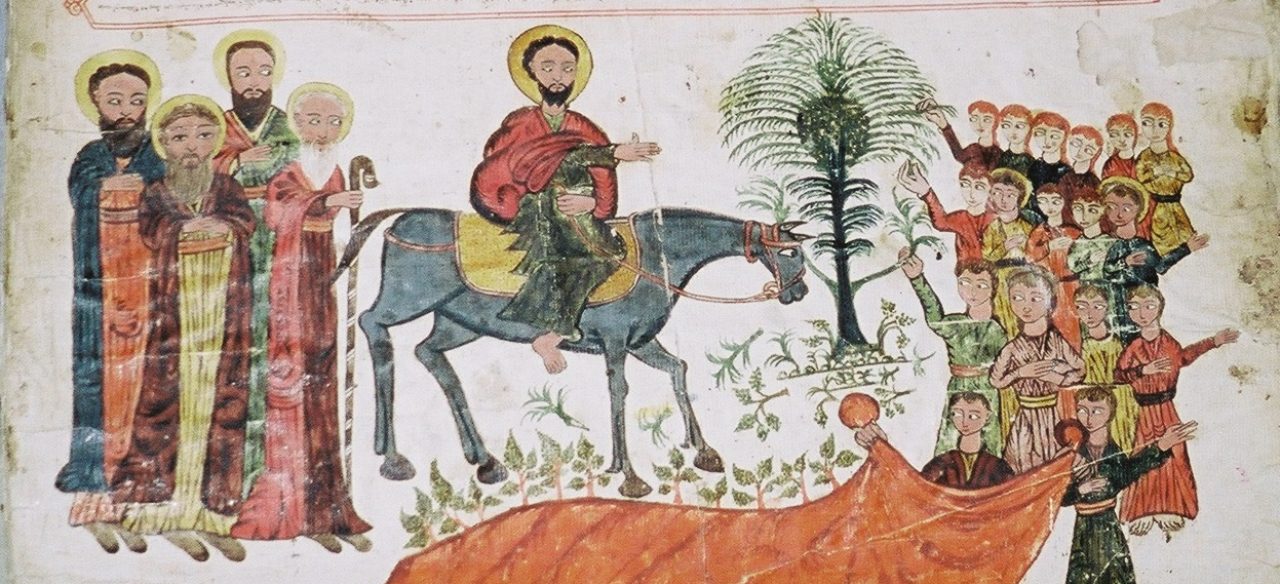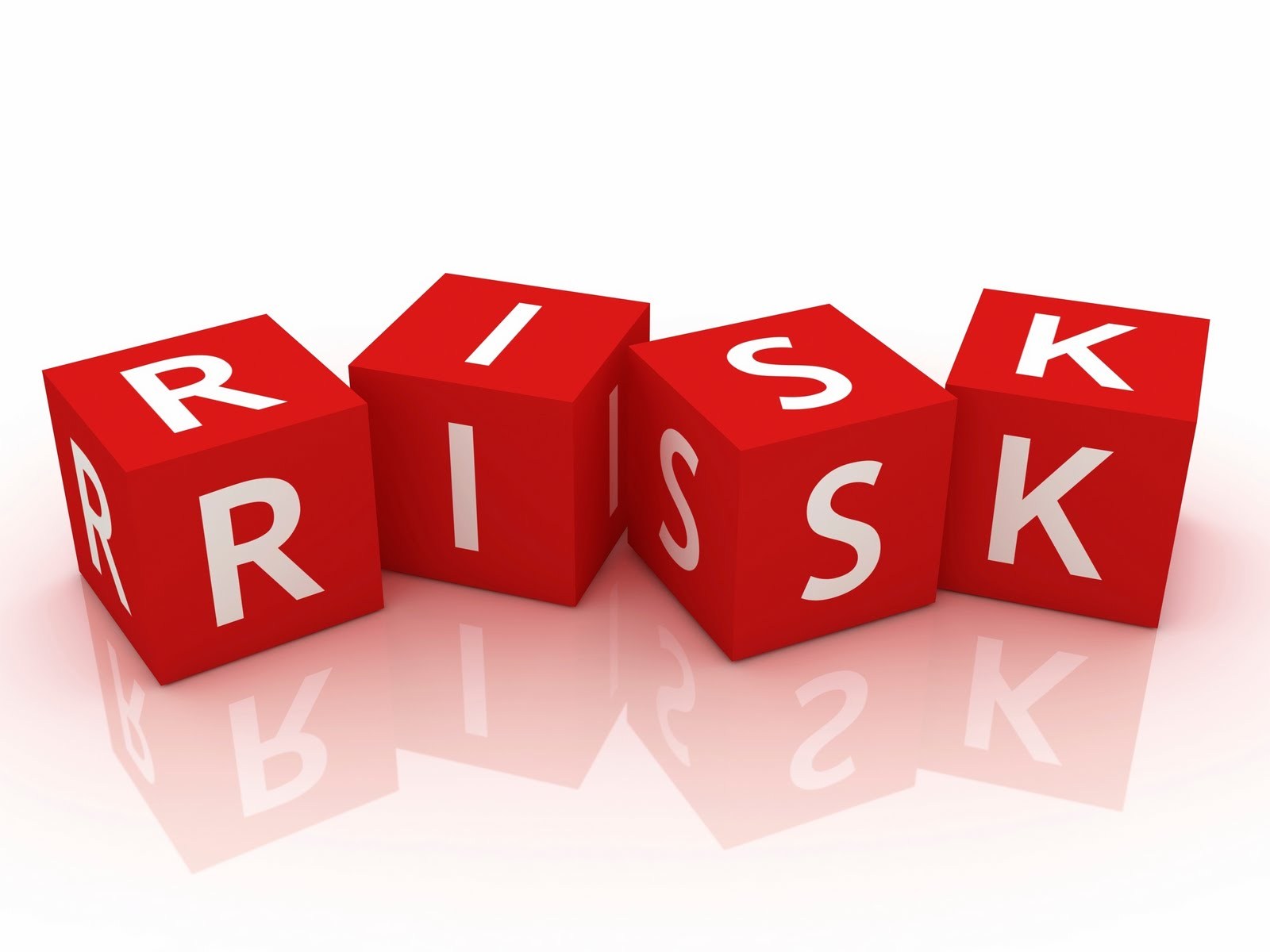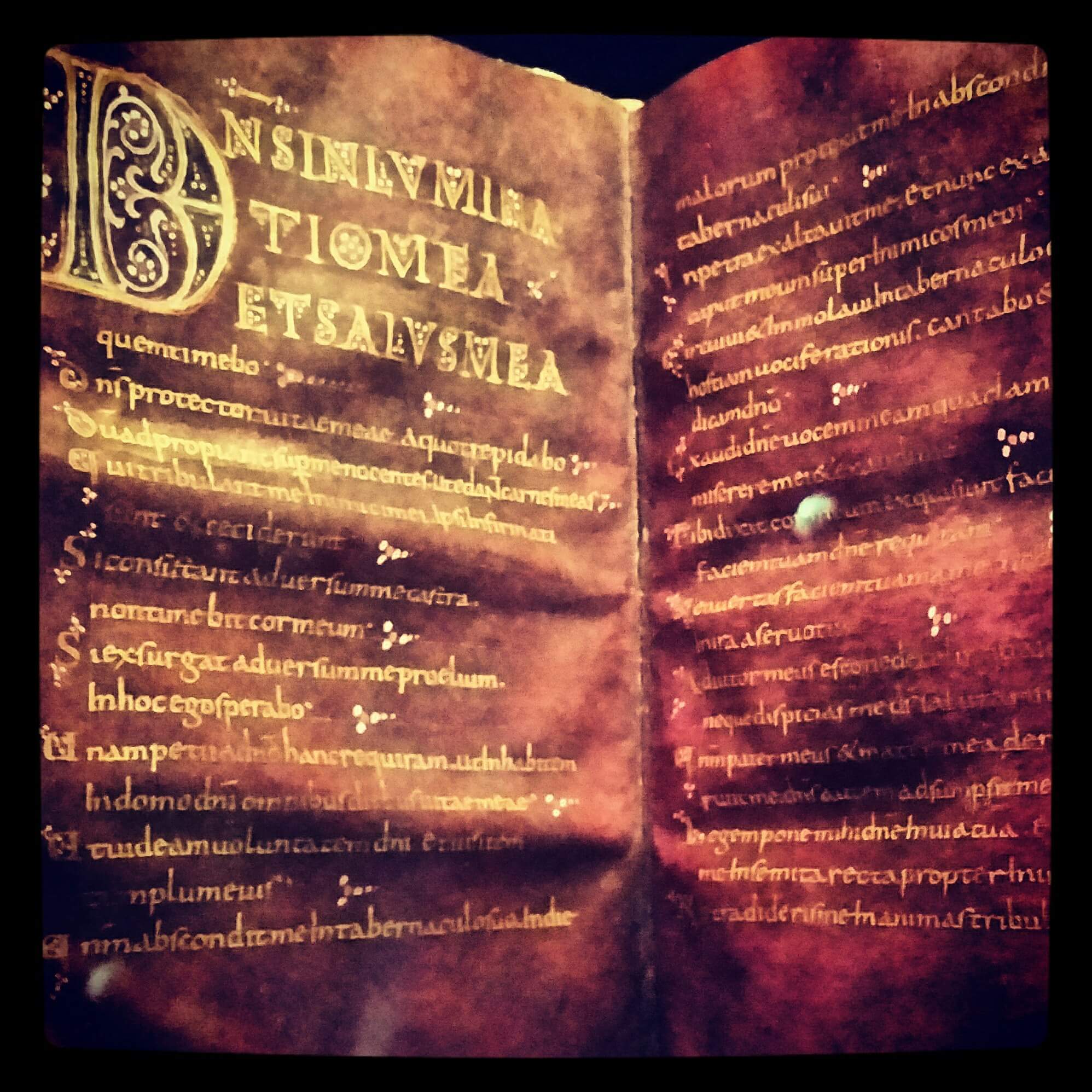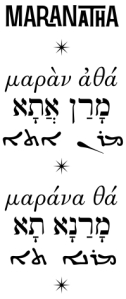Robert Fisk recently wrote an article about Ma‘loula (معلولا) for the Independent. It is a good article, and I was glad to read it. However, there are a couple of small errors about the Aramaic spoken in Ma‘loula and its neighbouring villages of Bakh‘a (بخعة) and Jubb‘adin (جبّعدين) in the Anti-Lebanon Mountains of Syria. As someone who works in Aramaic, I tend to read many articles written by journalists touching on the language, and many make the same mistakes. So, I offer this article as a little corrective.
- Aramaic is a Semitic language — Fisk’s article declares “Did Arabic and Hebrew descend from Aramaic? Scholars – I always find that an odd word – are still undecided.” It is a rather silly statement because scholars, and it is always best to be a little more specific, are totally decided that the question of Arabic and Hebrew descending from Aramaic is rather silly. Aramaic, with Arabic and Hebrew, is part of the Semitic branch of Afro-asiatic languages (spoken throughout the Middle East and north-east Africa). All Semitic languages are descended from a hypothetical Proto-Semitic language, which branched off into the various Semitic languages that have existed throughout history. Thus, Aramaic, Arabic and Hebrew do not have parent-child relationships, but more cousinly ones. In fact, Arabic branched off earlier, and so is slightly more distantly related to the other two, with Hebrew and Aramaic having more in common (these both belong to Northwest Semitic group). For example, the greeting of peace in Hebrew is shalom (שלום), in Arabic is salam (سلام), and in Aramaic is shlama (ܫܠܡܐ or שלמא).
- Aramaic has a long and diverse history — A major problem with reporting about Aramaic is that it is often treated as a monolithic language. However, no language stands still: we can see how English has changed from Shakespeare to hip-hop, let alone going back as far as Beowulf. Aramaic has a recorded history that is more than twice as long as that of English. Although, I would reckon that Aramaic has resisted change far better than English has, in different times and places people have spoken and written different Aramaics. Geographically, varieties of Aramaic tend to fall into two branches: the more vigorous Eastern Aramaic in Mesopotamia, and the near extinct Western Aramaic in the Levant. The earliest Aramaic inscriptions come from the tenth century BC. During the latter half of the eight century BC, the conquests of the Neo-Assyrian founder Tiglath-Pileser III, Aramaic became the diplomatic language of the region. Around the year 500 BC, Darius decreed Aramaic as the official language of Achaemenid Persian Empire. The standard Aramaic practised by Achaemenid scribes is known as Official Aramaic. After the conquest of Alexander the Great and the rise of the Seleucid Empire, Greek became the language of power and high society in much of the Levant, while Aramaic continued as a rural language, remaining strong in its Mesopotamian heartland. Thus, most post-Achaemenid Aramaic is written in Mesopotamian dialects. The Aramaic of Ma‘loula is the last living remnant of the western varieties of Aramaic. Greek and Aramaic coexisted for over a millennium, until Arabic gradually became the dominant language of the Middle East.
- Aramaic is one of the original languages of the Bible — The Old Testament (Hebrew Bible) was originally written down in Hebrew, and the New Testament was written in Greek. However, a few parts of the Old Testament were originally written in Aramaic. The largest portion of Aramaic is Daniel 2.4b–7.28, with the rest of the book written in Hebrew. Daniel 2.4 is odd as the text changes from Hebrew to Aramaic mid-flow: ‘And the Chaldaeans said to the king in Aramaic, “O king, live for ever! Tell your servants the dream, and we will reveal the interpretation”’ (where the narration is in Hebrew, then the quoted speech is in Aramaic, but then the narration and everything else continues in Aramaic). Portions of the Book of Ezra are also in Aramaic, as is one sentence in the Prophet Jeremiah, and one word in Genesis. The variety of Aramaic in Daniel and Ezra is post-Achaemenid with many Greek borrowings.
- Jesus spoke Aramaic — This is one of the big selling-points of Aramaic for many, and almost every journalist who mentions Aramaic has to make the connection with Jesus. I would too! However, we obviously have no sound recordings of Jesus speaking Aramaic, nor is he alleged to written anything down, except in the dust (John 8.6–9). Jesus’ speaking Aramaic is based on two bits of evidence. Firstly, we know that Aramaic was widely spoken by Jews and their neighbours, particularly among the lower classes. Hebrew and Greek were also important languages, and Jesus would probably have been able to speak them too. Secondly, the Greek New Testament records quite a few Aramaic words and phrases, names and places in transliteration (with no spoken Hebrew). These little fossilised bits of Aramaic are interesting in themselves — ‘talitha qum’, ‘ephphatha’ (actual Aramaic ‘ethpethach’) and ‘eli eli’ or ‘eloi eloi lema sabachthani’ (in Mark 5.41, Mark 7.34, Matthew 27.46 and Mark 15.34 respectively). So, we are pretty sure Jesus spoke Aramaic. However, the Aramaic he would have spoken is clearly different from any Aramaic spoken today. We Christians who speak Aramaic like to say that we speak the language of Jesus, but in practice we all speak slightly different varieties of Aramaic to that spoken by Jesus. It is just not quite so glamourous to admit that we speak a language that is as close as you can get to that spoken by Jesus.
- No gospels were first written in Aramaic — There are people around (in the Internet sense rather than around universities) who will go to great lengths to prove that some of the New Testament was written in Aramaic, and then later translated into Greek. They are wrong.
- People of different religions speak Aramaic — Religion is a big deal, and Aramaic is the language of worship and theology for Christians, Jews and Mandeans. Christians make up the largest religious group among fluent Aramaic speakers. Aramaic as a learned language is used in prayer and study by many more Christians, Jews and Mandeans who do not speak it fluently. As well as liturgical texts in Aramaic for all three religions, a little less than a fifth of the Dead Sea Scrolls are in Aramaic, and the base language of the Talmud is also Aramaic.
- There are a few million Aramaic-speakers today — It is often stated that Aramaic is an extinct language, or that some small group is the last few speakers of Aramaic in the world. However, there are thriving communities of Christian Aramaic-speakers in Chicago and Södertälje, near Stockholm, produced by different waves of refugees. However, the various modern Aramaics are endangered. Chronic turmoil in Aramaic-speaking homelands is a major factor. Also, Aramaic is less useful for everyday life if everyone around you is speaking Turkish, Arabic, Hebrew, Swedish, German or English. The erosion of Jewish modern Aramaics is the most acute — each variety spoken by a small cluster of families from a Mesopotamian village, they have low intelligibility with each other, and most speakers are now in Israel and are giving way to Hebrew. Mandaic in both its classical and modern varieties is severely threatened, as is the Mandean way of life in Iraq and Iran. Mlahso, a Christian Aramaic from southeast Turkey, became extinct upon the death of Ibrahim Hanna in 1998. Turmoil and diaspora has created a koine, or amalgam, language of the previously diverse spectrum of Christian Aramaic tribal dialects spoken from the mountains of southeast Turkey to the plains of northern Iraq. On the more hopeful side, young people are using music (Aramaic hip-hop is pretty good!) and the Internet to keep their language alive, yet still there is major language erosion going on all around Aramaic.
- Aramaic is written in a number of different scripts — It is not straightforward to answer the question which script Aramaic is written in. The earliest inscriptions use a modified Phoenician script, which was used by many Northwest Semitic languages. Official Aramaic developed a formal, chancery script that was adopted by Jews for writing both Aramaic and Hebrew. What we think of today as Hebrew script (אבגד) is the descendent of Official Aramaic script. In Daniel 2.4, when the language changes from Hebrew to Aramaic, there is no change of script. In the first century BC, the cursive Aramaic script of the city of Edessa began its development, which was taken up by Christian Aramaic-speakers, and is known as Syriac script (ܐܒܓܕ). Other cursive Aramaic scripts were developed for Mandaic, Nabatean and Palmyrene. Cursive Nabatean and Syriac were influential in the development of Arabic script (ابجد). When Robert Fisk asks about Aramaic being the forerunner of Hebrew and Arabic, he is clearly confusing the history of development of writing systems with the languages themselves, which, to be fair, is not an uncommon mistake. Syriac script has been found on Turkic gravestones in Central Asia as well as on a Tang Dynasty inscription in China.
- How do Syriac, Chaldean and Assyrian fit in with Aramaic? — Different varieties of Aramaic have their own names, and names of the varieties often bear a relation to the speakers’ ethnic and religious identity. The Syriac identity is almost synonymous with Christian speakers of Aramaic. As Christianity was adopted by many Aramaic speakers the name ‘Aramean’ came to be associated with their pagan past (armaya means ‘pagan’ in Classical Syriac), and so the Greek translation of ‘Aram’, which is ‘Syria’, was adopted. Many Christian Aramaic-speakers now refer to themselves as Assyrian in reference to Northern Mesopotamia, which long remained known as Assyria after the fall of the Neo-Assyrian Empire (interestingly they often spell it ‘As-‘ after the Greek spelling or ‘Ash-‘ after the Akkadian spelling, rather than ‘Ath-‘ the historical Aramaic spelling). Modern Christian Aramaic varieties called Assyrian should not be confused with the ancient variety of Akkadian known as Assyrian, which is a very different Semitic language. The term Chaldean or Chaldee is quite confusing, it belonged to the Semitic people of the Southern Mesopotamian marshes who founded the Neo-Babylonian Empire in 620 BC. Seeing as the Book of Daniel is set during the final years of this empire, St Jerome chose to use the word ‘Chaldee’ to describe Biblical Aramaic (I have an old Aramaic dictionary that is charmingly titled A Chaldee Lexicon). After the fall of this empire, the term came to refer to the scribal class of Achaemenid Babylon, which led ‘Chaldean’ to becoming a byword for ‘magician’. The term received renewed use when a split in the Church of the East led to one bishop Yuhannan Sulaqa being consecrated as ‘Patriarch of the Chaldeans’ by the Pope in Rome in 1553, based on Jerome’s use of the term for the Aramaic language. This identity continues to be used by East Syriac-rite Catholics, and is occasionally used to refer to their dialects of Aramaic.
- Any other questions? — Leave a comment below.
